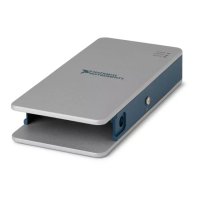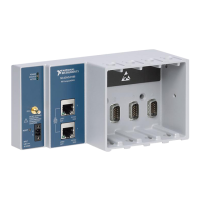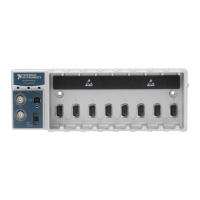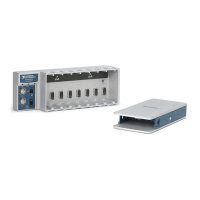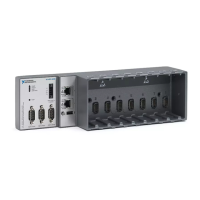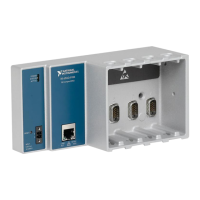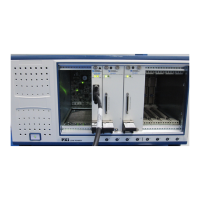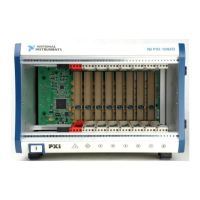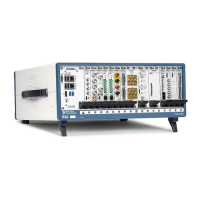© National Instruments | 6-23
cDAQ-9185/9189 User Manual
Single Two-Signal Edge-Separation Measurement
With single two-signal edge-separation measurement, the counter counts the number of rising
(or falling) edges on the Source input occurring between an active edge of the Gate signal and
an active edge of the Aux signal. The counter then stores the count in the FIFO and ignores other
edges on its inputs. Software then reads the stored count.
Figure 6-23 shows an example of a single two-signal edge-separation measurement.
Figure 6-23. Single Two-Signal Edge-Separation Measurement
Implicit Buffered Two-Signal Edge-Separation Measurement
Implicit buffered and single two-signal edge-separation measurements are similar, but implicit
buffered measurement measures multiple intervals.
The counter counts the number of rising (or falling) edges on the Source input occurring between
an active edge of the Gate signal and an active edge of the Aux signal. The counter then stores
the count in the FIFO. On the next active edge of the Gate signal, the counter begins another
measurement. The STC3 transfers the sampled values to host memory using a high-speed data
stream.
Figure 6-24 shows an example of an implicit buffered two-signal edge-separation measurement.
Figure 6-24. Implicit Buffered Two-Signal Edge-Separation Measurement
Sample Clocked Buffered Two-Signal Separation Measurement
A sample clocked buffered two-signal separation measurement is similar to single two-signal
separation measurement, but buffered two-signal separation measurement takes measurements
over multiple intervals correlated to a sample clock. The counter counts the number of rising (or
AUX
Counter
Armed
8
000123 4567880 8
Measured Interval
GATE
SOURCE
Counter Value
Latched Value
SOURCE
Counter Value
Buffer
AUX
GATE
123 123 123
3
3
3
3
3
3
Artisan Technology Group - Quality Instrumentation ... Guaranteed | (888) 88-SOURCE | www.artisantg.com
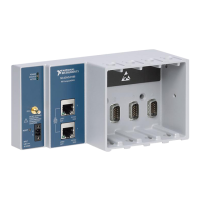
